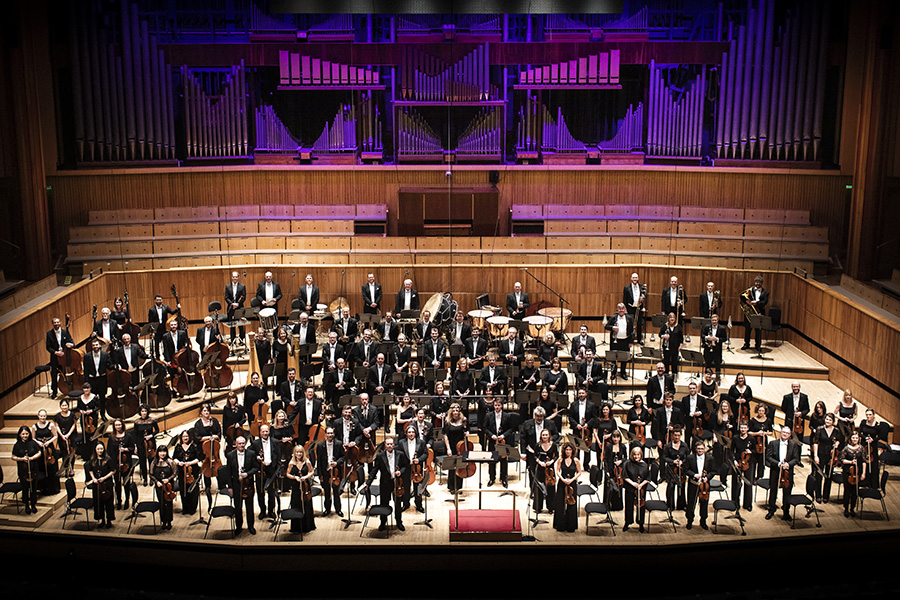This week the London Philharmonic Orchestra presents two performances of a programme under the title Heroes and Heroines – one at the Royal Festival Hall in London, and the second at the Brighton Dome. The Orchestra is led by Dima Slobodeniouk, with Beatrice Rana as guest soloist, playing Mendelssohn’s Piano Concerto No 1. Also on the programme is Sibelius’ Second Symphony and Stride, a work by Tania Léon.
Dima Slobodeniouk, said by the New York Times to have given “one of the most auspicious New York Philharmonic debuts of recent years”, last year ended a 9-year tenure as Music Director of the Orquesta Sinfónica de Galicia. He was Principal Conductor of the Lahti Symphony Orchestra from 2016 to 2021, and Artistic Director of the Sibelius Festival. Maestro Slobodeniouk works with some of the world’s major orchestras, such as the Berliner Philharmoniker, London Symphony Orchestra, Gewandhausorchester Leipzig, Concertgebouworkest and the NHK Symphony Orchestra. Among the highlights of this current season are debuts with orchestras such as the BBC Symphony, Pittsburgh Symphony, Wiener Symphoniker and Danish National Symphony, with return visits to the Boston Symphony, Swedish Radio Symphony, Helsinki Philharmonic and Oslo Philharmonic orchestras, and the Orquesta Sinfónica de Galicia.
Multi award-winning pianist Beatrice Rana, whose playing – according to The Times – has ”a kind of Orphic seductiveness, a transcendent lightness of touch”, performs at some of the world’s most prestigious concert halls and festivals, including Vienna’s Konzerthaus and Musikverein, Berlin Philharmonie, Amsterdam’s Concertgebouw, New York’s Lincoln Center and Carnegie Hall, the Royal Albert and Royal Festival halls, Philharmonie de Paris, the Verbier Festival, Mostly Mozart Festival and Washington DC’s Kennedy Center. She has toured Europe with the London Symphony Orchestra and Gianandrea Noseda, with the Bayerische Rundfunk Symphony Orchestra and Yannick Nézet-Seguin, and Asia with the Orchestra dell’Academia di Santa Cecilia and Antonio Pappano. In 2017, Beatrice started her own chamber music festival Classiche Forme in her native town of Lecce, in Puglia, which has become one of Italy’s major summer events. She also became artistic director of the Orchestra Filarmonica di Benevento in 2020.
Fast-moving and wonderfully melodic in true Mendelssohn style, the Piano Concerto No 1 in G minor Op 25 was written in Munich, following the composer’s extensive tour of Europe, which began in 1829. The work, which is played without breaks between the three movements, was completed in 1831 and premiered by Mendelssohn – who was himself a virtuoso pianist and organist – on 17th October of that year. Shortly afterwards, a second performance was given in London, where the work was published. Mendelssohn played it many times during his short career, and it was always received warmly both by public and press.
Sibelius sketched out the concept of his Second Symphony while staying in the small town of Rapallo on the west coast of Italy, near Genoa. He originally intended it to be a symphonic poem – with thoughts of Dante’s Divine Comedy and the legend of Don Juan on his mind – but once home in May 1901, Sibelius used the material to write a symphony, completing it in the same year. It is regarded as one of his most popular works, and was no doubt influenced partly by the optimistic future longed for in Finland at the time, but also by the natural beauty of Rapallo, which gives it a lighter tone than many of his other works. As Osmo Vänskä, Finnish conductor and highly-acclaimed interpreter of Sibelius, explained: “The second symphony is connected with our nation’s fight for independence, but it is also about the struggle, crisis and turning-point in the life of an individual. This is what makes it so touching.” The symphony was premiered by the Helsinki Orchestral Society on 8th March, 1902, with the composer conducting.
The opening work of this concert is a piece called Stride by Tania Léon, the Cuban American composer who will become the Philharmonic’s Artist-in-Residence for two seasons as of September this year. Kennedy Center Honoree 2022, Pulitzer Prizewinner 2021 and founding member and music director of Arthur Mitchell’s Dance Theatre of Harlem in 1969, Tania Léon wrote Stride as part of the New York Philharmonic’s Project 19 to mark the centenary of American women being given the right to vote in 1920. Tania Léon focussed on pioneering feminist Susan B Anthony, who did not take ‘no’ for an answer, but kept pushing and moving forward, which is precisely what ‘stride’ means – something that is moving forward. Stride received its world premiere at David Geffen Hall, Lincoln Center, New York City on 13th February 2020.
Dima Slobodeniouk leads the London Philharmonic Orchestra and guest artist Beatrice Rana in works by Tania Léon, Felix Mendelssohn and Jean Sibelius on 31st March at London’s Royal Festival Hall, and on 1st April at the Brighton Dome. For further information and details on booking, please visit the London Philharmonic Orchestra website.
Information sourced from:
London Philharmonic programme notes

